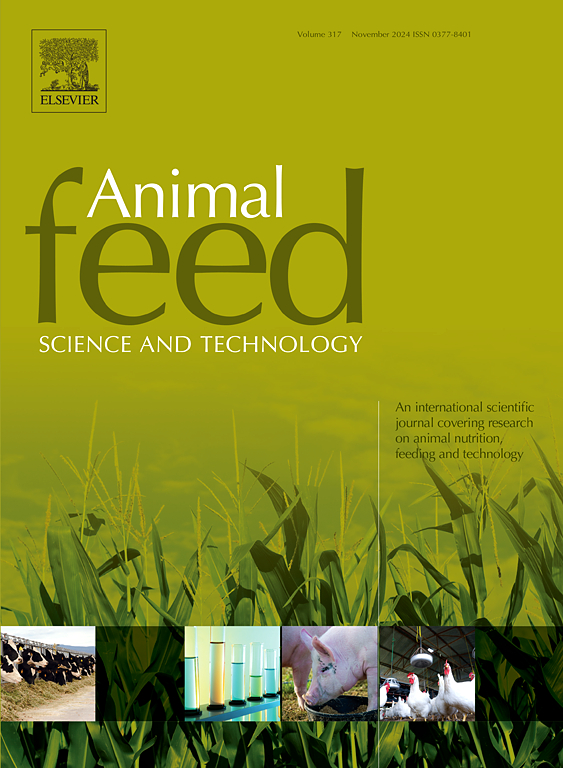Evaluation of cuttlefish protein hydrolysate as partial fishmeal replacement in diet for tilapia (Oreochromis niloticus) fingerlings: Influence on growth and disease resistance
IF 2.5
2区 农林科学
Q1 AGRICULTURE, DAIRY & ANIMAL SCIENCE
引用次数: 0
Abstract
With global fishmeal production declining, this study valorised cuttlefish processing waste into cuttlefish protein hydrolysate (CFPH) as a sustainable aquafeed ingredient. Generally, protein hydrolysates enhance growth performance and immunity in fish, the optimal CFPH level for fish and its influence on growth and disease resistance efficiency remain unstudied - a gap this research addresses while valorizing fishery by products. With this background, the present study was designed to evaluate the effects of dietary CFPH as a partial fishmeal replacement on growth performance and disease resistance in tilapia (Oreochromis niloticus) fingerlings. During the feeding trial, animals were fed with isonitrogenous and isocaloric diets such as Control (0 g CFPH & 20 g FM/100 g), T1 (5 g CFPH & 15 g FM/100 g), T2 (10 g CFPH & 10 g FM/100 g), T3(15 g CFPH & 5 g FM/100 g), T4(20 g CFPH & 0 g FM /100 g), T5(0 g CFPH & 0 g FM/100 g) for a period of 65days. Fishes fed with the diet containing 15 g CFPH/100 g diet showed significantly (P < 0.05) improved weight gain percentage, specific growth rate, protein efficiency ratio and feed conversion ratio compared to control diets. Whereas, increasing the inclusion of CFPH in diet beyond 15 g/100 g negatively affected the growth performance of tilapia fingerlings. After the feeding trial, fishes were subjected to a challenge study with Aeromonas hydrophila, treatment group fed with diet containing 20 g CFPH/ 100 g diet showed significant (P < 0.05) defensive efficiency against the virulent bacterial infection. Based on the outcome of the present study, it is concluded that CFPH is one the potential aqua-feed ingredients having both the growth performance and diseases resistance efficiency.
墨鱼蛋白水解物在罗非鱼鱼苗饲料中部分替代鱼粉的评价:对生长和抗病性的影响
随着全球鱼粉产量的下降,本研究将墨鱼加工废料转化为墨鱼水解蛋白(CFPH)作为一种可持续的水产饲料成分。一般来说,蛋白质水解物可以提高鱼类的生长性能和免疫力,但鱼类的最佳CFPH水平及其对生长和抗病效率的影响仍未得到研究-本研究在评估渔业副产品时解决了这一空白。在此背景下,本研究旨在评估饲料中添加CFPH作为部分鱼粉替代品对罗非鱼(Oreochromis niloticus)鱼种生长性能和抗病能力的影响。在饲养试验中,动物饲喂等氮等热量饲粮,如对照组(0 g CFPH &;20 g FM/100 g), T1(5 g CFPH &;15 g FM/100 g), T2(10 g CFPH &;10 g FM/100 g), T3(15 g CFPH &;5 g FM/100 g), T4(20 g CFPH &;0 g FM /100 g), T5(0 g CFPH &;0 g FM/100 g),为期65天。与对照饲料相比,添加15 g CFPH/100 g CFPH的饲料显著提高了鱼的增重率、特定生长率、蛋白质效率和饲料系数(P <; 0.05)。饲料中CFPH添加量超过15 g/100 g会对罗非鱼鱼种的生长性能产生负面影响。饲喂试验结束后,对嗜水气单胞菌进行攻毒试验,饲喂20 g CFPH/ 100 g饲粮的试验组对嗜水气单胞菌的防御效率显著(P <; 0.05)。综上所述,CFPH是一种具有良好生长性能和抗病性的潜在水产饲料原料。
本文章由计算机程序翻译,如有差异,请以英文原文为准。
求助全文
约1分钟内获得全文
求助全文
来源期刊

Animal Feed Science and Technology
农林科学-奶制品与动物科学
CiteScore
6.00
自引率
6.20%
发文量
266
审稿时长
3 months
期刊介绍:
Animal Feed Science and Technology is a unique journal publishing scientific papers of international interest focusing on animal feeds and their feeding.
Papers describing research on feed for ruminants and non-ruminants, including poultry, horses, companion animals and aquatic animals, are welcome.
The journal covers the following areas:
Nutritive value of feeds (e.g., assessment, improvement)
Methods of conserving and processing feeds that affect their nutritional value
Agronomic and climatic factors influencing the nutritive value of feeds
Utilization of feeds and the improvement of such
Metabolic, production, reproduction and health responses, as well as potential environmental impacts, of diet inputs and feed technologies (e.g., feeds, feed additives, feed components, mycotoxins)
Mathematical models relating directly to animal-feed interactions
Analytical and experimental methods for feed evaluation
Environmental impacts of feed technologies in animal production.
 求助内容:
求助内容: 应助结果提醒方式:
应助结果提醒方式:


